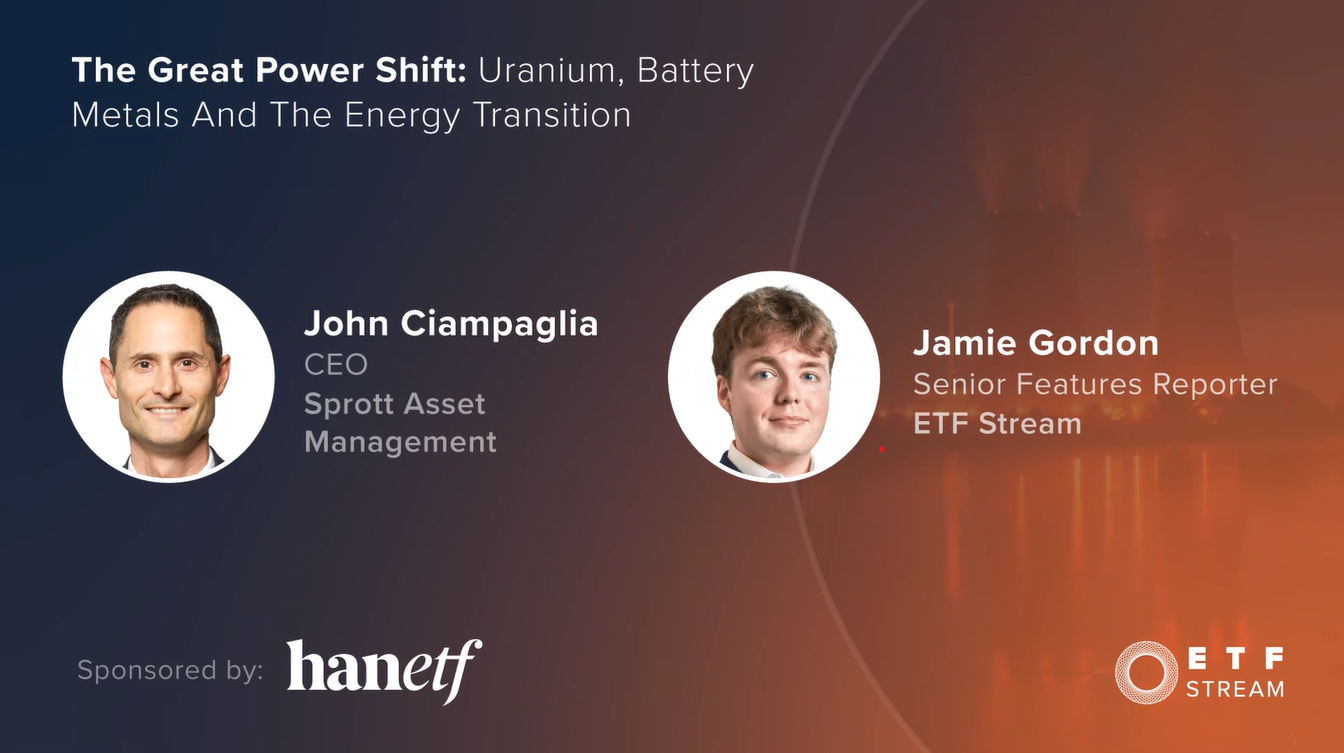Nuclear’s global renaissance, the impact of the US Inflation Reduction Act and the future supply of transition metals were all topics discussed at ETF Stream’s recent webinar in partnership with HANetf.
The webinar, titled The great power shift: Uranium, battery metals and the energy transition, started by assessing the factors behind the growing demand for nuclear power, including the increasingly tight supply of natural gas and coal on global markets.
John Ciampaglia, CEO and senior managing director at Sprott Asset Management, said factors such as rising geopolitical tensions are leaving countries vulnerable to supply shocks which could impact their energy production.
“Countries require huge quantities of natural gas and coal which they secure daily,” he said. “A nuclear power plant runs for two years continuously and people are starting to see the value of having a stable and reliable baseload of power as part of their energy mix.”
Ciampaglia added the increasing weaponisation of commodities has yet to hit uranium but noted its concentrated supply from a small number of countries meant it was “geopolitically complicated”.
For example, Kazakhstan produces 45% of global capacity, with Russia, China, Pakistan, Canada and Australia some of the biggest remaining suppliers.
Limited supply and growing demand have boosted the price of uranium over the past few months, with the HANetf Sprott Uranium Miners UCITS ETF (URNM) returning 51% this year.
The ETF, which tracks the North Shore Sprott Uranium Miners index, invests uranium in mining companies and has an 18% allocation to physical uranium.
Transition metals
Alongside nuclear, there are many critical metals behind the clean energy technologies that will power the transition such as copper and cobalt.
However, as with uranium, many of these can be geopolitically sensitive creating challenges to supply chains, according to Ciampaglia.
“About 70% of cobalt, which is a critical element within every battery cathode, comes from one country in Africa, which unfortunately happens to be one of the poorest and most corrupt,” he said.
“Investors are incredibly sensitive about the supply chains and whether the mining that is being done is responsible and sustainable.”
Despite this, he added policy initiatives such as the US Inflation Reduction Act, a $370bn clean energy policy initiative, are helping to drive private market investment into the sector.
“If you look at what has happened in the last year in the US, there are nearly 100 new clean energy facilities or expansions that have been announced. That totals almost $100bn in private investment alone in giga factories and electric vehicle manufacturing,” Ciampaglia said.
As a result, Europe, the UK and Canada have been forced to follow suit in a bid to remain competitive in attracting investment to their countries.
According to the Bloomberg New Energy Finance research, investments into the energy transition hit $1.1trn last year, matching fuel industry investment which it is set to overtake in 2023.
“Fossil fuels have peaked in some areas, for example, they have been losing market share to electric vehicles for the last six years and this is going to continue over the next few decades,” Ciampaglia said.
He added lithium will be a big component of this with demand expected to “rise dramatically” over the next few years, along with nickel, cobalt and copper.
Capturing this theme, the Sprott Energy Transition Materials UCITS ETF (SETM) tracks the Nasdaq Sprott Energy Transition Materials Ex Uranium index.
“Taking a basket approach is the best way to play this theme,” Ciampaglia said. “We created an ETF with HANetf that invests in the producers of lithium, copper, you know, rare earths, silver, cobalt and manganese graphite so you get a bit of everything.”
Watch a full replay of the webinar here.




